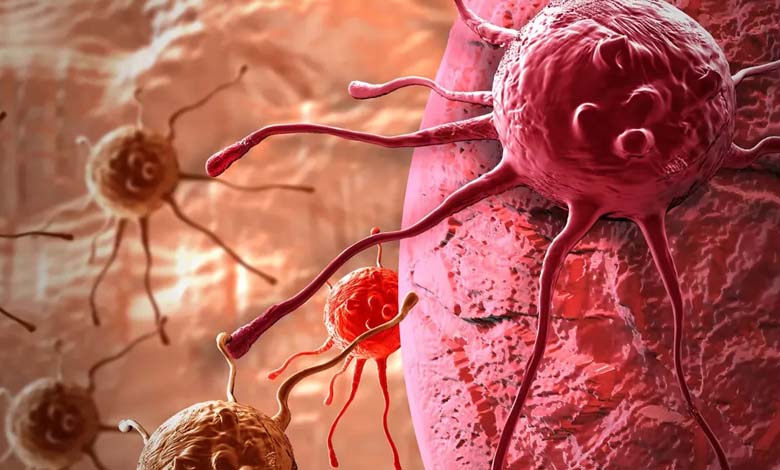Shocking Scientific Discovery: The Surprising Strategy Cancer Cells Use to Survive Nutrient Shortages

In a groundbreaking and unexpected revelation, a recent scientific study has demonstrated that cancer cells do not simply engage in ruthless competition for scarce nutrients, as previously assumed by researchers. Instead, they display a remarkable ability to cooperate when faced with food shortages, a survival strategy that significantly enhances their resilience and facilitates their continued spread within the body.
-
New innovative method destroys 99% of cancer cells
-
Scientists Achieve a Major Breakthrough in Cancer Treatment: What is the Role of Cells?
This pioneering study was carried out by a team of esteemed researchers from a prestigious university, under the leadership of Dr. Carlos Carmona-Fontaine. Their findings were published in the highly regarded and globally recognized scientific journal Nature, further emphasizing the significance of this discovery within the medical and scientific communities.
According to Dr. Carmona-Fontaine, who shared insights from the study with the specialized science news platform SciTech Daily, the research team identified a previously unknown cooperative mechanism among cancer cells. Contrary to prior beliefs that cancer cells function solely as ruthless competitors, this study uncovered an astonishing ability for collaboration: these malignant cells secrete a specific enzyme called CNDP2, which plays a crucial role in their survival. This enzyme actively breaks down proteins into smaller, usable amino acids, which are then shared among cancer cells, ensuring their sustenance even in conditions of severe nutrient deprivation.
-
“Promising” Discovery: Identification of Cancer-Causing Immune Cells
-
“Manipulating Light”: A Butterfly Wing-Inspired Technology for Cancer Diagnosis
Revolutionary Implications for Cancer Research and Treatment
Dr. Carmona-Fontaine elaborated further, stating: “Our observations reveal that cancer cells leverage this extraordinary ability to function collectively, using it as a survival advantage to persist and continue spreading throughout the body. This discovery challenges long-standing assumptions and could lead to groundbreaking advancements in cancer treatment strategies.”
Historically, it was widely accepted within the scientific community that cancer cells within a tumor engaged in relentless competition for limited resources, with only the strongest and most aggressive cells surviving over time. This competitive environment was thought to drive the rapid evolution of tumors, allowing only the fittest cells to thrive. However, this recent study shatters that perspective, demonstrating that when confronted with nutritional stress, cancer cells switch from competition to cooperation, working together rather than fighting against one another.
-
Artificial Intelligence Excels in Detecting Breast Cancer
-
Will Artificial Intelligence Play a Role in Cancer Detection?
Cutting-Edge Research Methods: How Scientists Made This Discovery
To reach these groundbreaking conclusions, the researchers employed state-of-the-art technology, utilizing an advanced robotic microscope and highly specialized image analysis software to observe the development and behavior of various tumor types in unprecedented detail. They meticulously altered the availability of nutrients in different experimental conditions, carefully tracking the reactions of millions of cancer cells across hundreds of unique test scenarios.
Dr. Carmona-Fontaine described the study’s most astonishing revelation, explaining:
“We were genuinely surprised to find that reducing amino acid availability did not have the expected weakening effect on large tumor masses. Instead, these tumors appeared to thrive under these conditions. This strongly suggests that a form of symbiosis exists among cancer cells, allowing them to sustain each other and continue proliferating despite resource limitations.”
-
“Biological Age”: A New Window for Early Detection of Colon Cancer
-
Fructose under the Microscope: What is its Connection to Cancer?
Future Perspectives: Can This Discovery Lead to More Effective Cancer Treatments?
This newfound understanding of cancer cell behavior opens the door to exciting new possibilities for cancer treatment and drug development. If scientists can identify ways to disrupt or inhibit the CNDP2 enzyme, they might be able to interfere with the cooperative mechanisms of cancer cells, potentially limiting tumor growth or even stopping it altogether.
By targeting the genetic coding responsible for this enzyme, researchers may develop new forms of treatment aimed at preventing cancer cells from sharing essential nutrients, thereby weakening them and making them more susceptible to existing therapies.
-
Can COVID-19 Fight Cancer? A Study Reveals a Surprise
-
Best Foods to Prevent Colorectal Cancer for Generation Z
This discovery represents a major paradigm shift in how scientists view tumor dynamics, challenging the conventional notion that cancer cells are solely engaged in a battle for dominance. Instead, it highlights the complex, adaptive, and cooperative nature of these malignant cells—an insight that could revolutionize future cancer treatments and significantly improve patient outcomes.
As research continues, this newfound knowledge could lead to innovative medical breakthroughs, offering new hope in the fight against one of the world’s most devastating diseases.












